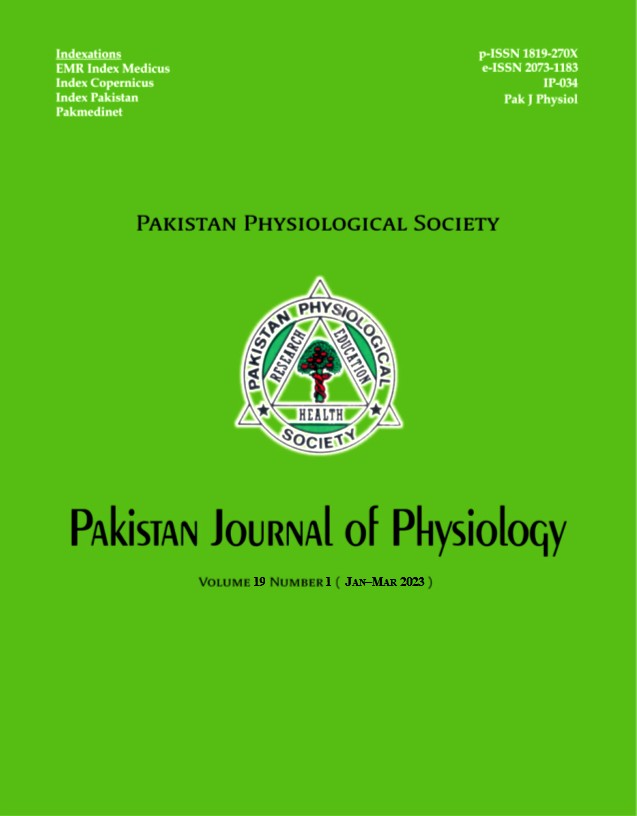CONSEQUENCES OF BRISK WALK, MODERATE INTENSITY CONTINUOUS AND HIGH INTENSITY INTERVAL TRAINING ON SHORT-TERM HEART RATE VARIABILITY IN HEALTHY YOUNG ADULTS
DOI:
https://doi.org/10.69656/pjp.v19i1.1442Keywords:
High-intensity interval training(HIIT), Exercise training, WalkingAbstract
Background: Short term heart rate variability is a time saving non-invasive measure of autonomic nervous system dysfunction. This study was conducted to assess and compare the effect of walking, medium intensity continuous and high-intensity interval training exercise modalities on short-term heart rate variability. Methods: This experimental study was conducted at the Department of Physiology, Islamic International Medical College, Rawalpindi, from August 2018 to August 2019. A total of 31 non-obese, healthy young individuals, free of comorbidities were included in the study. Participants were assigned through randomization to walk for 30 minutes intervention (n=10), medium intensity continuous training (MICT) intervention (n=11) and high-intensity interval training (HIIT) intervention (n=10). Intervention groups completed a total of 24 sessions in 7 weeks. Heart rate variability (HRV) analysis was performed by a 15-minute ECG recording before and after 24 sessions of intervention. ECGs were recorded by using the PowerLab® model 4/25T and the data were analysed using the software LabChart® Pro-8.0 with HRV 2.0 module installed. Results: After 24 sessions of 30-minute brisk walking exercise of 3,000 steps in an open area revealed a significant improvement in some HRV components when compared with pre-intervention levels of mean R-R interval (p=0.02), LFms2 (p=0.02) and LF/HF ratio (p=0.03). No significant differences were recorded after MICT and HIIT interventions among the groups. Conclusion: Compared to MICT and HIIT, a brisk walk in an open area was found to be effective mode of physical activity for improvement of HRV.
Pak J Physiol 2023;19(1):21–5
Downloads
Downloads
Published
How to Cite
Issue
Section
License
The author(s) retain the copyrights and allow their publication in Pakistan Journal of Physiology, Pak J Physiol, PJP to be FREE for research and academic purposes. It can be downloaded and stored, printed, presented, projected, cited and quoted with full reference of, and acknowledgement to the author(s) and the PJP. The contents are published with an international CC-BY-ND-4.0 License.











